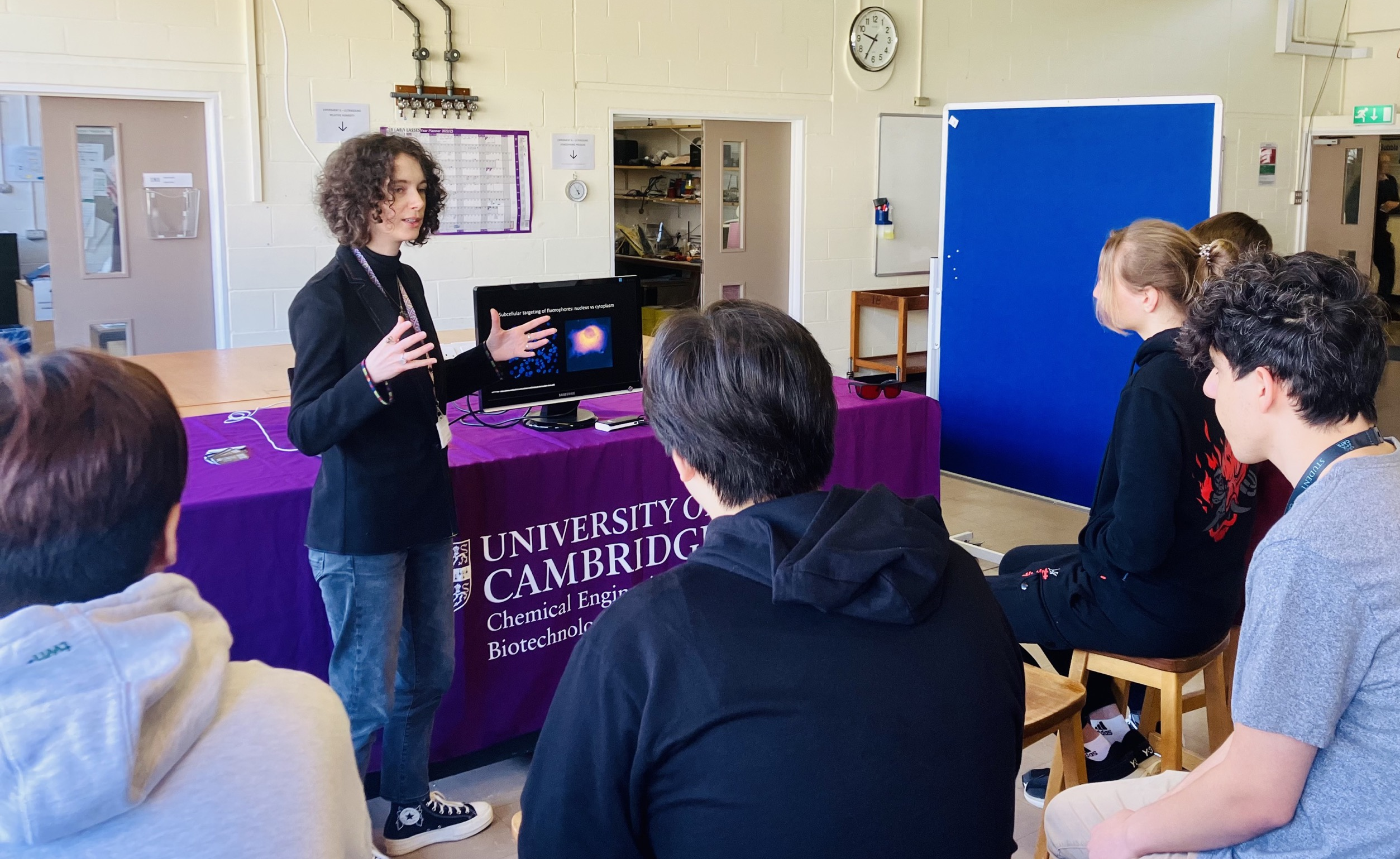CEB at ‘Physics at Work’ exhibition 2023
CEB Laser Analytics group participates in educational outreach at ‘Physics at Work’

Our Laser lab has contributed with an educational outreach activity at the annual ‘Physics at Work’ exhibition at the Cavendish Laboratory in Cambridge on 21 September 2023.
‘Physics at Work’ is a free outreach event open to all schools, funded by the Office for Students. Running over three consecutive days, it aims to show 14-16-year-olds the variety of careers to which studying Physics can lead and the range of practical problems that physics can be used to solve. The exhibition focuses on the interaction between active scientific researchers and students. The students are split into small groups of around 15 and are accompanied by a teacher as they follow a defined route with different stalls and demo stands to be visited.
The Laser Analytics research group, led by Professor Clemens Kaminski, was one of the 25 exhibitors at the event, which also included research groups from the Cavendish Laboratory and other industry partners and companies such as Rolls-Royce Plc., Domino Printing Services, and the AWE.
The visiting students from CATS Cambridge, Newnham Collegiate Sixth Form Centre, Pudsey Grammar School, Montsaye, and the Sixth Form College Colchester will soon be making important career, academic, and examination choices. Physics at Work aims to make the decision easier.
Dr Francesca van Tartwijk, a postdoctoral researcher from the Laser Analytics Group, ran one outreach session to share her excitement about working with fluorescence microscopy to study biophysical questions. Francesca is part of a large research team at CEB made up of physicists, biologists, chemists, and engineers, who together develop and apply modern laser-based imaging methods for applications to a range of problems. The group focuses largely on elucidating molecular mechanisms of disease, using a range of biological model systems and super-resolution microscopy techniques.
Physical principles govern the design of fluorescence microscopes as well as the behaviour of disease-associated proteins, which Francesca showed to the students in attendance using a demonstration as well as real images from her work.
First, she described how electrons have unique properties: they can only absorb and emit light at specific wavelengths. This principle is harnessed in fluorescence microscopy. The students then witnessed these principles first-hand. With the help of a laser, light-filtering goggles, and dye solutions, Francesca showed that fluorescent dyes absorb green light but release it as yellow light. Because of this, filters can be used to pinpoint the light emitted by these dyes.
She further explained how these dyes can attach to specific molecules inside cells, allowing us to see how these molecules function. To illustrate, she presented an example involving RNA-binding proteins. The protein’s behaviour changes in neurodegenerative diseases, and this change can be observed using the dyes. The experiment showed the real-life application of fluorescence microscopy.
Francesca added:
“It was great fun to show students how the physical principles they study influence not only instrument design but also the organisation of cells like neurons and how this can be affected in disease. I think physics is a wonderful field of study, especially where it intersects with biology, and I hope the students caught some of my enthusiasm for interdisciplinary research!”
Any schools interested in attending any outreach activities at the Department of Chemical Engineering and Biotechnology can contact our team at outreach@ceb.cam.ac.uk.
